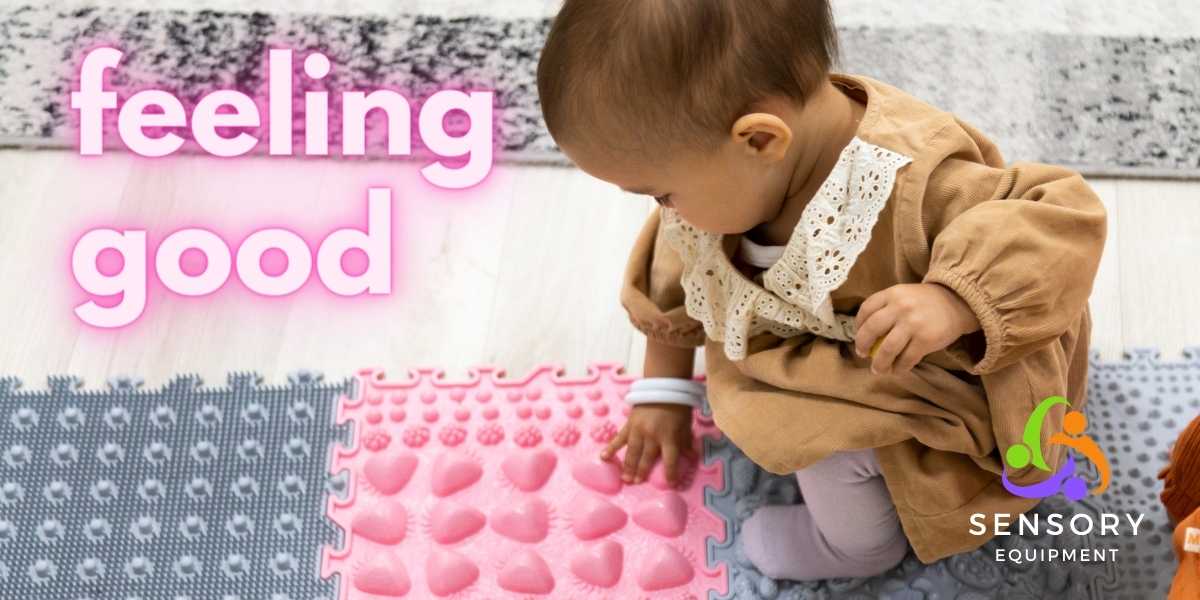For children with autism spectrum disorder (ASD), navigating the sensory world can be a challenging and overwhelming experience. Sensory mats have emerged as valuable tools to create a therapeutic environment that caters to the unique needs of these children. These mats offer a range of tactile, visual, and auditory stimuli designed to promote sensory integration and enhance overall well-being.
Types of Sensory Mats:
- Tactile Mats:
Tactile mats focus on stimulating the sense of touch. They incorporate various textures such as soft fabrics, bumpy surfaces, and raised patterns to engage the child’s tactile system. These mats provide a safe space for exploration and can help desensitise hypersensitive individuals or provide comforting sensations for those seeking increased tactile input. - Visual Mats:
Visual sensory mats are designed to captivate and engage a child’s visual senses. They often feature vibrant colours, contrasting patterns, and moving elements like glitter or liquid-filled compartments. These mats can aid in visual tracking, attention development, and colour recognition while creating a visually stimulating yet calming environment. - Auditory Mats:
Auditory sensory mats are equipped with various sound elements to stimulate the auditory senses. They may include embedded speakers, calming music, or nature sounds. These mats can assist in developing auditory discrimination skills, reducing hypersensitivity to certain sounds, and promoting a sense of calmness through soothing auditory input. - Pressure Mats:
Pressure mats provide deep touch pressure, which has been shown to have a calming effect on individuals with autism. These mats often include inflatable elements or weighted components that apply gentle pressure to the body. This can help regulate sensory processing, reduce anxiety, and improve focus.
Benefits of Sensory Mats for Children with Autism:
- Sensory Regulation:
Sensory mats play a crucial role in sensory regulation, helping children with autism manage their responses to stimuli in their environment. The controlled sensory input provided by these mats can assist in self-regulation, reducing instances of sensory overload or withdrawal. - Improved Focus and Attention:
Many children with autism struggle with attention and focus. Sensory mats, particularly those with tactile and pressure elements, can help improve concentration by providing a sensory experience that captures and sustains their interest. - Calming and Relaxation:
The sensory input from these mats has a calming effect, promoting relaxation and reducing stress. This is particularly beneficial for children who may experience heightened anxiety or exhibit repetitive behaviours as a response to sensory challenges. - Enhanced Sensory Awareness:
Sensory mats encourage exploration and interaction with different textures, sounds, and visual stimuli, contributing to improved sensory awareness. This increased awareness can positively impact a child’s overall sensory processing abilities over time.
Conclusion:
Sensory mats are valuable tools in creating a supportive environment for children with autism. By addressing sensory needs, these mats contribute to improved self-regulation, enhanced focus, and an overall sense of well-being. As our understanding of autism continues to evolve, the development and utilisation of such sensory interventions play a vital role in fostering a more inclusive and supportive world for individuals on the autism spectrum.








